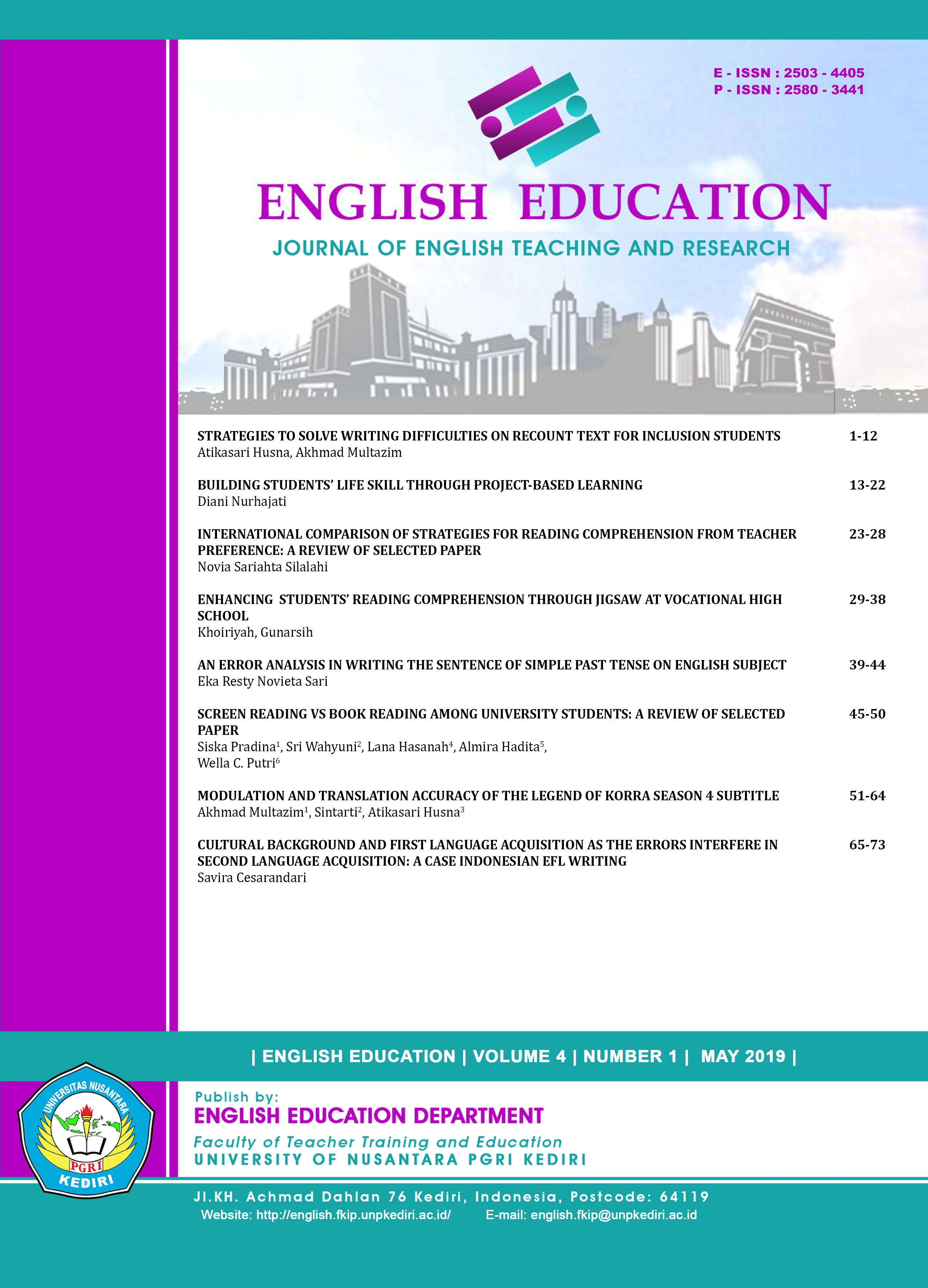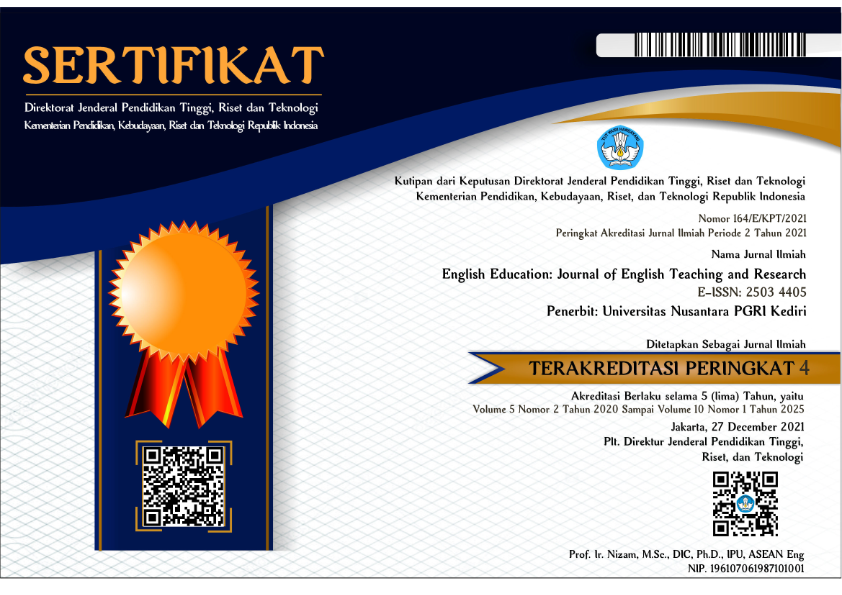STRATEGIES TO SOLVE WRITING DIFFICULTIES ON RECOUNT TEXT FOR INCLUSION STUDENTS
DOI:
https://doi.org/10.29407/jetar.v4i1.12799Abstract
The objective of this study is to find out the teachers’ strategies to solve the students’ difficulties in writing recount text. This study was conducted in the eighth grade of an inclusion class in Yogyakarta. The study belongs to a qualitative research. The participant of this study was three teachers of English. The study investigation was done by interviewing the three teachers of English at Junior High School. The data collecting technique were interview and recording. There were several steps to analyse the data: first, analysing the students’ difficulties, then interviewing the teachers and the last step is descriptive analysis. The result of the study shows that the teachers’ strategies to solve the difficulties are: (a) in content aspect, the teachers used picture series as the learning media and guided writing; (b) in organization aspect, the teachers used guided writing; (c) in grammar aspect, the teachers used random word, modelling of text and mini dictionary product; (d) in mechanic aspect, the teachers recommended to improve reading habit of students; (e) in generic structure of recount text aspect, the teachers used semi guided and supported by picture series as learning media.
Downloads
Downloads
Published
Issue
Section
License
Authors who publish with this journal agree to the following terms:
- Copyright on any article is retained by the author(s).
- The author grants the journal, the right of first publication with the work simultaneously licensed under a Creative Commons Attribution License that allows others to share the work with an acknowledgment of the work’s authorship and initial publication in this journal.
- Authors are able to enter into separate, additional contractual arrangements for the non-exclusive distribution of the journal’s published version of the work (e.g., post it to an institutional repository or publish it in a book), with an acknowledgment of its initial publication in this journal.
- Authors are permitted and encouraged to post their work online (e.g., in institutional repositories or on their website) prior to and during the submission process, as it can lead to productive exchanges, as well as earlier and greater citation of published work.
- The article and any associated published material is distributed under the Creative Commons Attribution-ShareAlike 4.0 International License








 Article template
Article template



